Feature Garden: A Star-Powered Garden
11 Jun 2021
This Longmont yard is big on pollinators and flower dances
Story by Lisa Truesdale Photos by Linda Grimes
Linda Grimes is a “bee whisperer.” It’s not a formal designation, like when she earned Master Gardener status several years ago. Her husband bestowed the informal title upon her because of the great care she takes to ensure the bees in their garden are happy, healthy and hydrated.
“Trickling water is so peaceful to listen to,” Linda says, “but all of our water features are really for bees and all the pollinators, not for us. I don’t want them to be thirsty.” Linda lovingly greets the bees each day with a soothing “good morning, ladies,” then carefully checks the pond, four fountains and eight birdbaths to make sure no bees are struggling to stay afloat as they drop down for a drink.
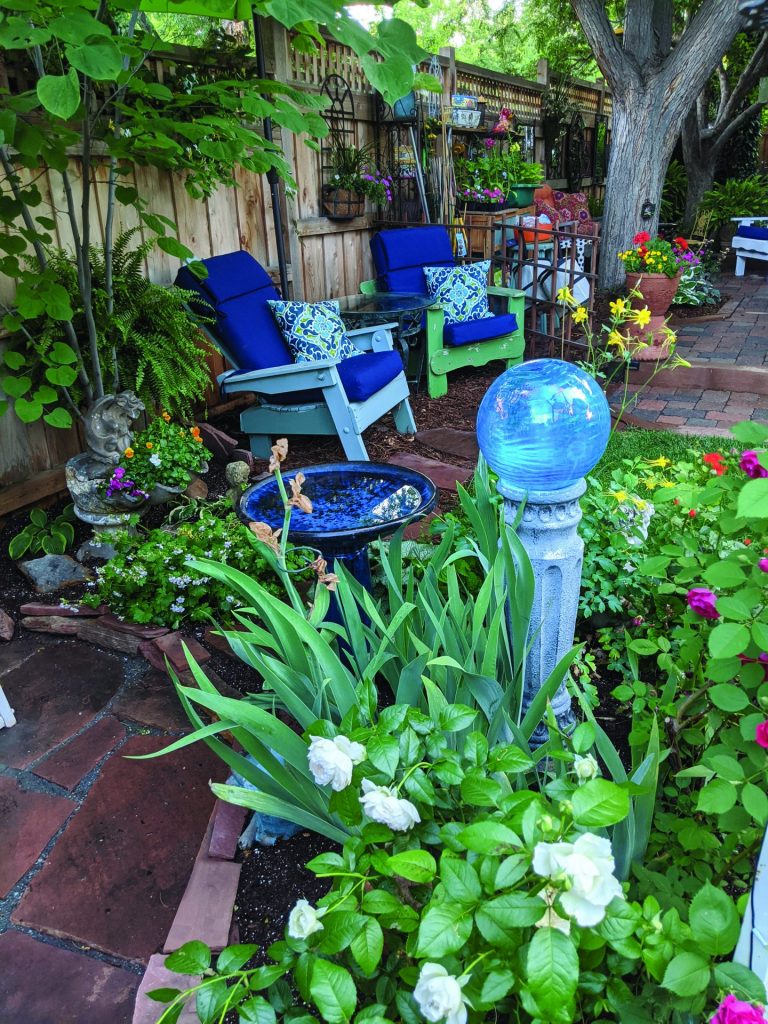
If she does spot some, “I’ll find a leaf or a twig to float in the water, then coax them onto it,” she says. “I’ve even been known to pet their tiny bodies a little bit to revive them if they need it, just gently, with the tip of my finger, or I blow on them softly. Once they’re safe and their wings are dry, they fly off. That makes me so happy.”
Linda knows winged creatures love her vibrant garden, and she does, too. Growing up in coastal New England, she was enchanted by cottage gardens—informal designs that burst at the seams with a showy abundance of ornamental and edible plants.
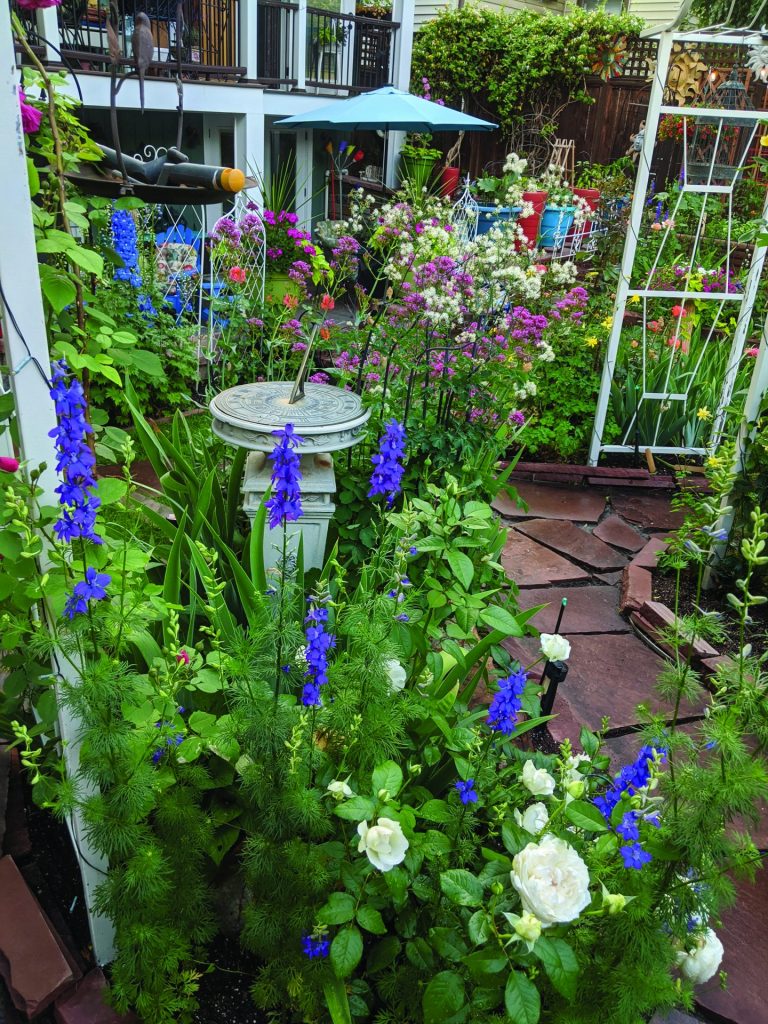
But when she and her husband, Herb Morrison, bought a cute house in old town Longmont 35 years ago, they considered creating a xeric garden. “I totally understand and appreciate the concept, especially in such a dry climate,” she says, but she still longed for her own cottage garden. And Herb, who originally hails from Roseburg, Oregon, was used to lush landscapes, too.
So, they compromised.
“We didn’t want a yard full of rocks,” Linda explains. “We decided we could still have a cottage garden, if it was pollinator-friendly and if we were conscious about conserving water.”
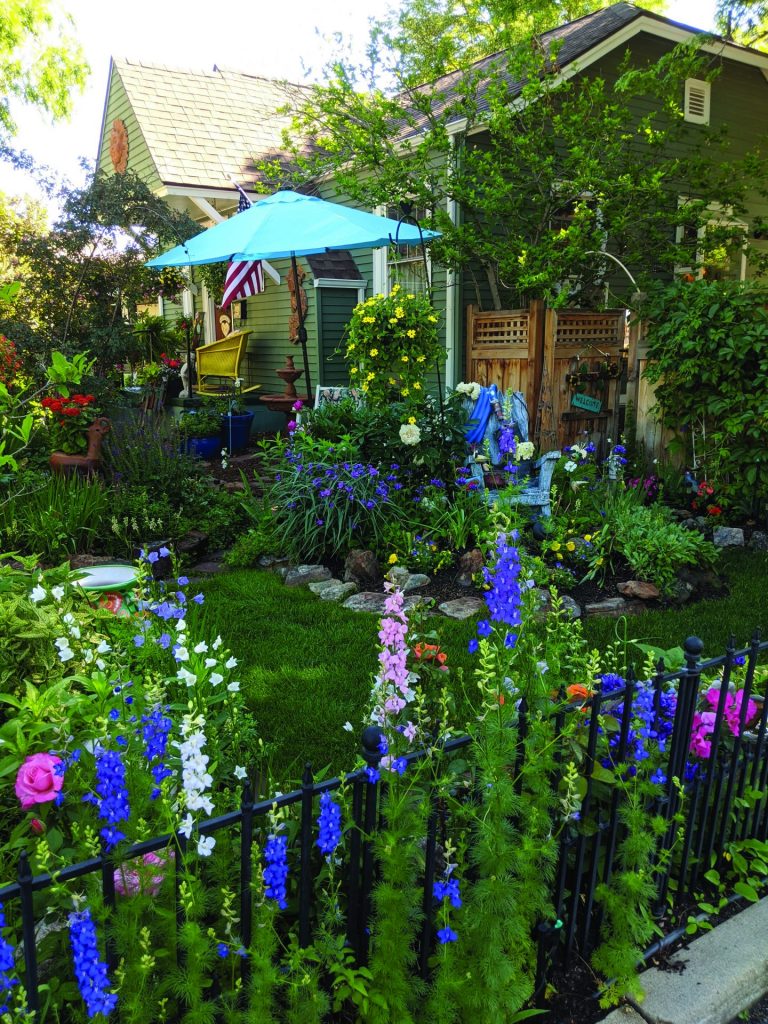
Luckily, Herb is an engineer, so he designed an efficient irrigation system throughout the front and back yards. They water only in the early morning when it’s cooler, collect rainwater in barrels to water container plantings and use lots of mulch. Linda adds, “Crowding things together also saves water”—prompting Herb to joke that his wife “leaves no square inch unplanted.” (Only about 5% of the available land is grass.)
To protect people, pets, plants and especially her precious pollinators, Linda and Herb never use herbicides or pesticides, and only use organic fertilizers.
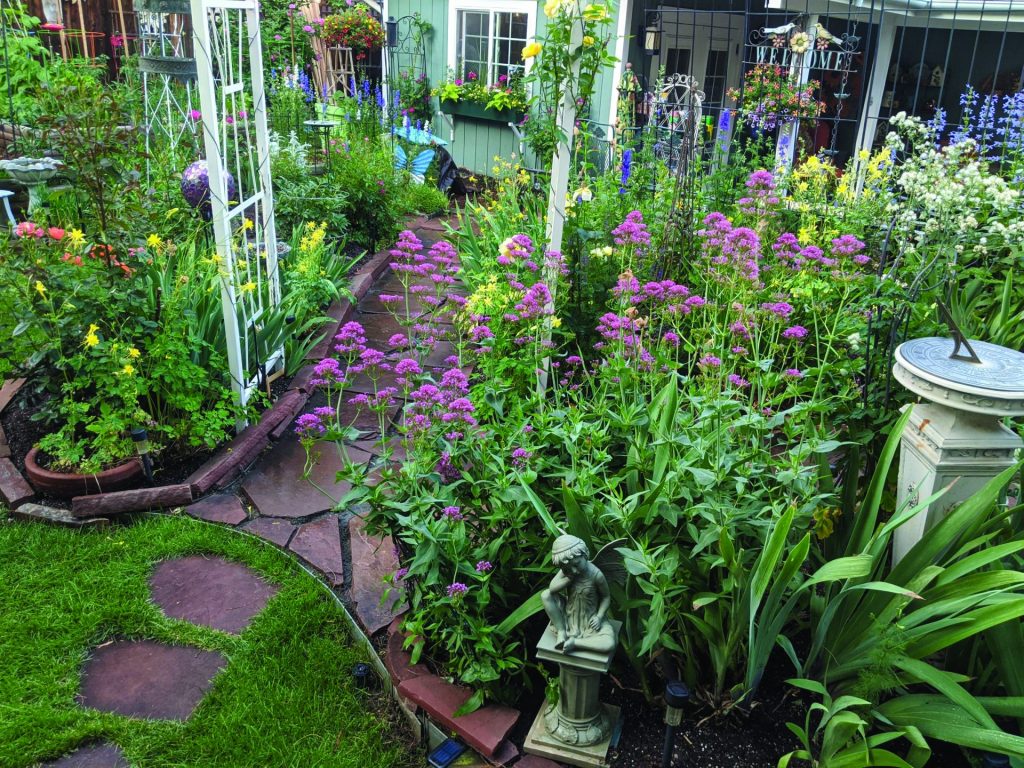
Different Shows Every Day
Each day, Linda dons what Herb calls her “Rambo gardening outfit”—camouflage pants, waterproof gardening clogs, a wide-brimmed hat and a tool belt—and makes her rounds to weed, trim, water where necessary, and pick veggies and herbs from the raised beds Herb built. While performing these tasks, she’s constantly amazed at “the dance of the flowers” and how certain blooms take turns at being the “stars of the show” throughout the growing season.
“In spring, it’s the tulips, irises and poppies that entertain us,” she says. “The way the poppies sway in the breeze, it’s like they’re dancing. After that, it’s the 78 rosebushes. In late summer, the stars are the Shasta daisies, sunflowers and Heliopsis.”
Linda adores all her perennials, which comprise about 90% of the garden, but she embellishes the yard each year with a smattering of annuals here and there. “The perennials are the ‘bones’ of the garden and the annuals are like the jewelry, giving it all a little more panache,” she says. “Besides, the older I get, the more I enjoy the bright, intense colors all around. No more pale pastels for me.”
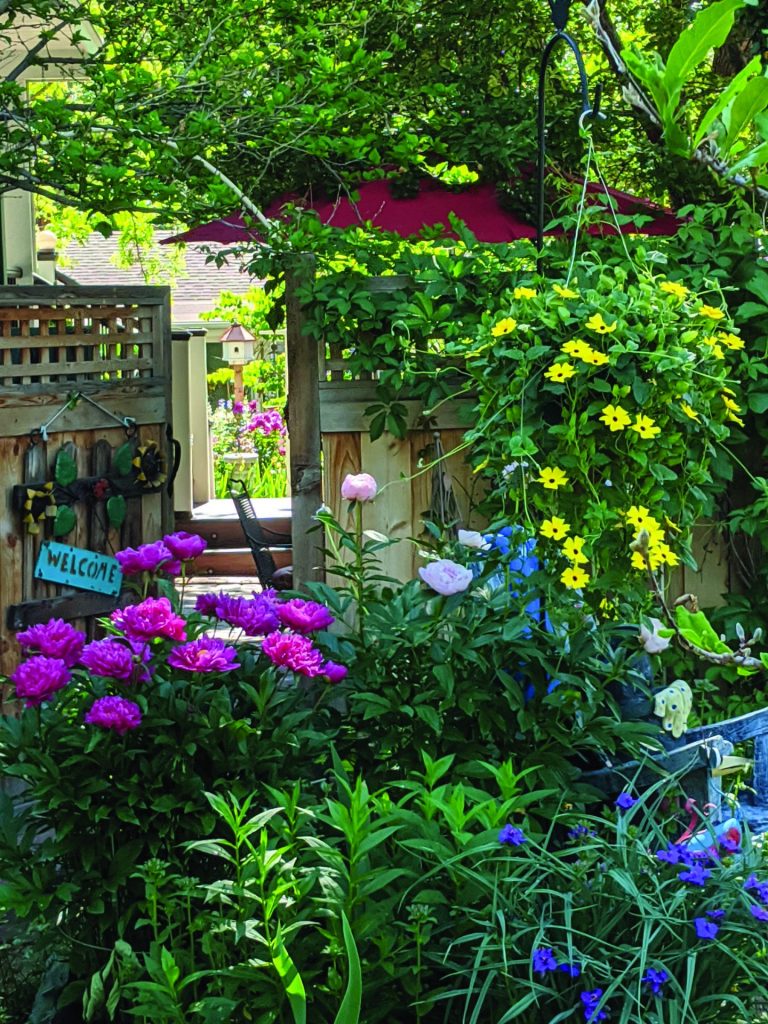
After three-plus decades of tending their garden, Linda and Herb have definitely covered nearly every square inch, including all the way up the alley along the fence and in the hellstrip out front by the curb. Linda says people probably assume she spends a fortune on plants, but she insists she doesn’t. That’s because she’s always willing to take a chance on rescuing scraggly plants.
“One year, at the end of the season when all the perennials were on sale, I found some really sad-looking clematis in a pile and bought them for 50 cents. I overwintered them in the vegetable garden, they survived, and today they’re one of the stars of the garden.”
You’ll rarely ever find Linda and Herb inside the house when it’s nice outside, and even when it’s not. Why would they be, they say, when among all these plants they’ve got a padded double swing, several groupings of bistro tables with comfy chairs, numerous benches, a covered back patio, and more brightly colored umbrellas than Linda can count?

(Photo by Lisa Truesdale)
Their garden has twice been featured on the Longmont Symphony Guild Festival of Flowers garden tour—in 2003 and 2017—and neighbors strolling by always marvel at the showy display and sometimes stop to chat. Linda even met one of her now-closest friends that way. Others come by to pick up some of the extra plants, mulch or compost that Linda generously sets out for free. And many simply want to heap praise upon her for how lovely the garden is.
Linda won’t have any of that, though.
“Oh, I enjoy doing this, for sure, but I can’t accept any of the praise,” she says. “Nature’s gonna do what nature’s gonna do. The birds drop stuff, the pollinators help, and seeds fly around.
“I’m not the creator of the dance of flowers; I’m just the choreographer.”












